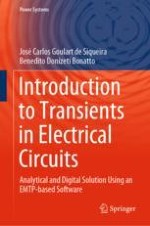This book integrates analytical and digital solutions through Alternative Transients Program (ATP) software, recognized for its use all over the world in academia and in the electric power industry, utilizing a didactic approach appropriate for graduate students and industry professionals alike.
This book presents an approach to solving singular-function differential equations representing the transient and steady-state dynamics of a circuit in a structured manner, and without the need for physical reasoning to set initial conditions to zero plus (0+). It also provides, for each problem presented, the exact analytical solution as well as the corresponding digital solution through a computer program based on the Electromagnetics Transients Program (EMTP).
Of interest to undergraduate and graduate students, as well as industry practitioners, this book fills the gap between classic works in the field of electrical circuits and more advanced works in the field of transients in electrical power systems, facilitating a full understanding of digital and analytical modeling and solution of transients in basic circuits.
